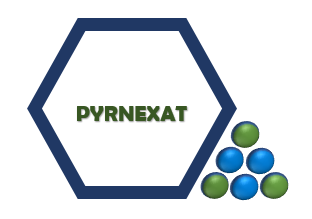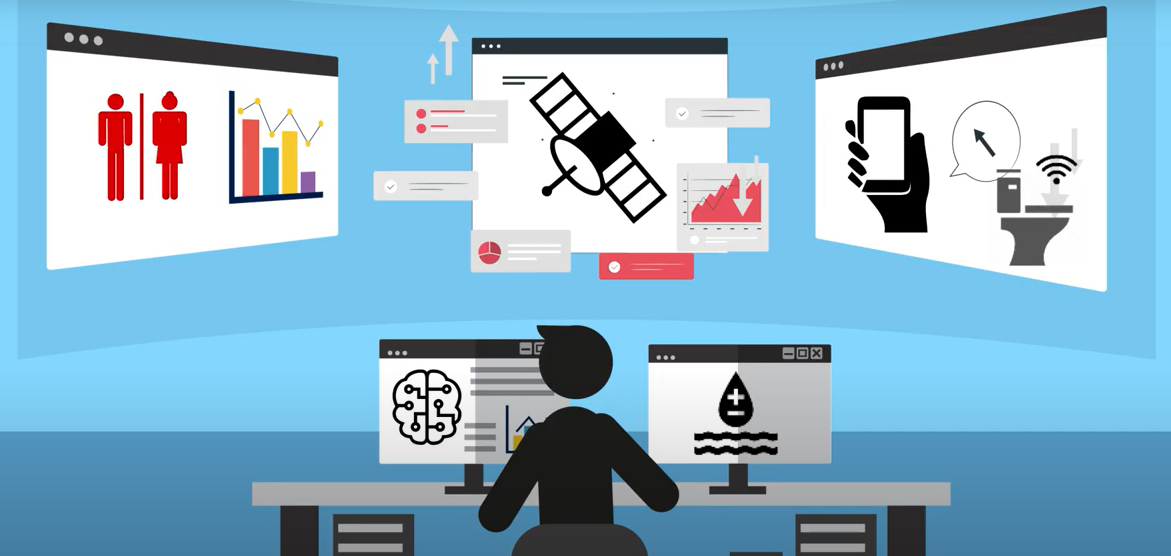
Objectives of the service

-
Monitoring of public and community sanitation to indicate potential disease outbreaks
-
Real-time environmental monitoring, to assist in the detection of poor sanitation resulting in contamination events due to changes in weather or other environmental conditions
-
Geo-spatial data collection to support improved system roll-outs and connectivity, optimizing sanitation services and the location of toilet facilities
Users and their needs
-
55% of wastewater treatment plants in South Africa do not meet effluent standards and some do not even measure effluent quality;
-
In 2009, when 449 wastewater treatment plants were assessed, according to official government data 7% were classified as “excellently managed”, 38% "performed within acceptable standards" and 55% “did not perform within acceptable standards”;
-
The African Development Bank estimates that $12 billion is required annually to cover Africa’s needs in improved water supply and sanitation;
-
50,000 litres of untreated sewage is released every second in South Africa;
-
South Africa has one of the world’s highest rates of mortality for children under the age of five. About 10% of those deaths are from diarrhoea. The effects of E coli and other sewage-related pollutants in a population are very high particularly in areas with a high prevalence of HIV in the population. NOTE – the project will using an early-stage sensor development to look at proxy data representing eColi and Salmonella Typhi as a means of verifying real-time pathogen detection in water and wastewater
The project was deployed in South Africa in the eThekwini region. Under a Contract Change Notice (CCN3) to the original plan, a “digital twin” faecal sludge treatment plant was integrated into the platform. Data from the ENVIRLOO closed-loop water treatment systems for community toilets was also integrated to monitor toilet use at a large school. The toilet monitoring detected toilet use by gender and assessed if changes in pathogen concentrations in the local water and soils affect toilet usage.
Service/ system concept
The demonstration system represents the initial phase in a long-term initiative aimed at delivering next-generation sanitation services. The solution is designed to collect data from a variety of sanitation-related processes, addressing use cases within the sanitation system that provided valuable, non-AI-based applications to the industry at that time. In delivering these sanitation
management applications, Woodco successfully captured usage data, which can be used for future artificial intelligence and machine learning services.

The project developed a single platform-based ICT system to collect, treat and process sanitation-related data using satellite technology, terrestrial sensor data, and data analysis. The platform provides smart sanitation management data, delivering applications and services, which can be used to manage the next-generation sanitation infrastructure and provide AI-based predictive
analytics for sanitation and public health management. The system can consume toilet usage sensor data, Earth Observation data, GNSS/PNT data, and Feacal Sludge Treatment Plant (FSTP) data. These data sets can be processed at the edge through the application of AI and Machine learning. By applying AI at the edge and at the core of the network, next-generation smart sanitation
applications can be developed.
Space Added Value
-
Woodco integrated Sentinel 1 and Sentinel 2 data initially with a focus on EO data from the Copernicus Programme, amalgamating ground truth terrestrial data with satellite imaging to develop predictive health tools which factor environmental conditions over a wide area.
-
Where physical water and soil sampling occurred, empirical data on pathogen concentration in the trial region was collated, with the sample location GNSS referenced to overlay the sample location with the laboratory test outcome and any associated pathogen
Current Status
The project was launched at International Toilet Day (November 19 th 2020) in association with the Toilet Board Coalition. The project has gone through contract change notices to factor operational changes that have occurred as the project progressed.
The BDR milestone meeting took place on March 19 th 2021 and was successfully completed.
The CDR milestone meeting took place on October 4 th 2021 and was successfully completed
The FAT#1 milestone meeting took place on October 10 th and was successfully completed
The CCN3 MS#4 (BDR) meeting took place on the 11 th of September 2024. This reviewed the update requirements and planning for the system deployment in South Africa.
The CCN3 MS#5 meeting took place on November 13 th to review the system operation prior to deployment in South Africa
The CCN3 MS#6 meeting took place following the installation of the system in South Africa to review the system deployment and operation
The CCN3 MS#7 meeting took place following a 6-month period of data collection following MS#6
The CCN3 MS#8 (Final Review) took place on Tuesday, December 9 th 2025




